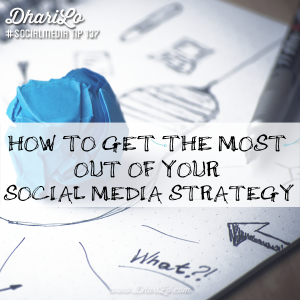Some best practices for B2B marketers on how to use get the most from your ABM technology both directly and indirectly.
Developing a solid strategy will help your organization use new ABM technology effectively. In fact, strategy should come first. The technology piece comes at the end of that strategy.
“If ABM tech should be the last step of your strategy, what do ABM organizations need to do to get greater returns on their investment?” asked Kristina Jaramillo, President of consulting firm Personal ABM at The MarTech Conference.
Here are some best practices for getting higher ROI from your ABM solution.
Don’t retrofit your AMB solution
“We need to stop listening to experts that tell you to retrofit ABM into existing lead-generating processes, lead tech, and even lead reporting,” said Jaramillo.
ABM platforms and strategies have more to offer than simply ramping up the number of sales prospects.
“Many marketing leaders and experts believe that you can retrofit your lead process, lead tech and lead reporting in and around what already exists into your new ABM approach,” Jaramillo said. “But if you retrofit ABM and just plug in new tech, then you’re not changing sales and marketing motions. You’re not changing customer success, interactions and experiences.”
Make emotional connections to orchestrate higher sales
A cybersecurity company Jaramillo consulted was stuck in its ABM strategy. The company was selling contracts worth $ 65,000 when its goal was to attract accounts priced up to five times higher.
The problem was that the company was executing one-to-many campaigns that drove awareness but didn’t speak directly to high-value prospects.
“They made their particular ABM program campaign-based versus focusing on the interactions that their sales and marketing teams needed to have with these accounts that can deliver that greatest revenue growth,” Jaramillo explained.
“The sales and marketing teams are pushing out content and messaging and hoping something would stick,” she said.
Using ABM behavioral data tools and other insights can help marketers make more personal connections further down the funnel.
“In most cases, buyer unresponsiveness is not because you fail to make a logical argument, it’s because you failed to make an emotional connection,” said Jaramillo. “It’s not because buyers didn’t believe your story. It’s because they didn’t see it as their story.”
Bring sales into the ABM strategy
Part of the ABM strategy should include preparing sales teams and allowing them to enter the buying process with the right information at the right time.
A fintech firm Jaramillo consulted was focused on increasing the number of appointments the sales team was making. The ABM strategy the company was using had scaled up the messages being sent out to prospects, but it failed to drive up the conversion rate.
“They didn’t think about how they should be changing the prospect experience,” said Jaramillo. “So the more this company focused on scaling ABM with tech, the further away they actually got from having the right interactions and delivering the right experiences.”
The messaging had to be more customer-focused. Sales had to work with marketing to develop value propositions that spoke to specific customers’ needs.
“They needed to help the sales and revenue teams engage in that two-way conversation to help future customers understand the gaps and the cost and risks of the current approach versus changing,” Jaramillo said. “We needed to help teams stop responding to predefined needs and to create a specific buying vision.”
The bottom line: ABM technology should be used to make deeper connections with prospects. Bringing together more team members from marketing and sales can make this journey with the customer more profitable.
The post How to get more ROI from your ABM tech appeared first on MarTech.
MarTech(9)
Report Post







